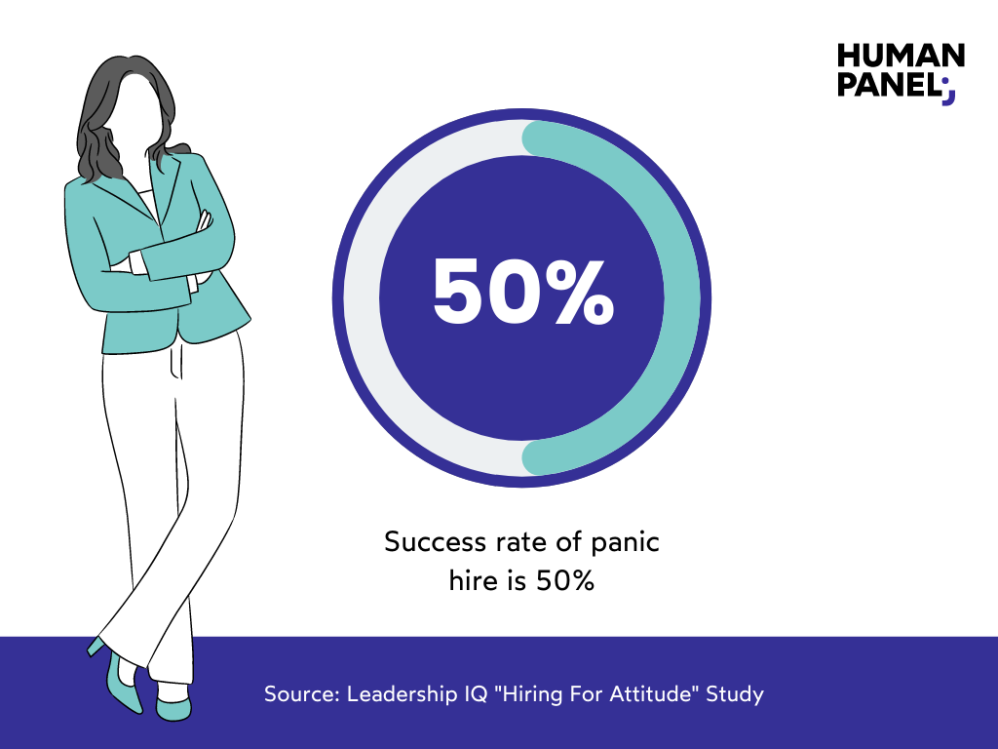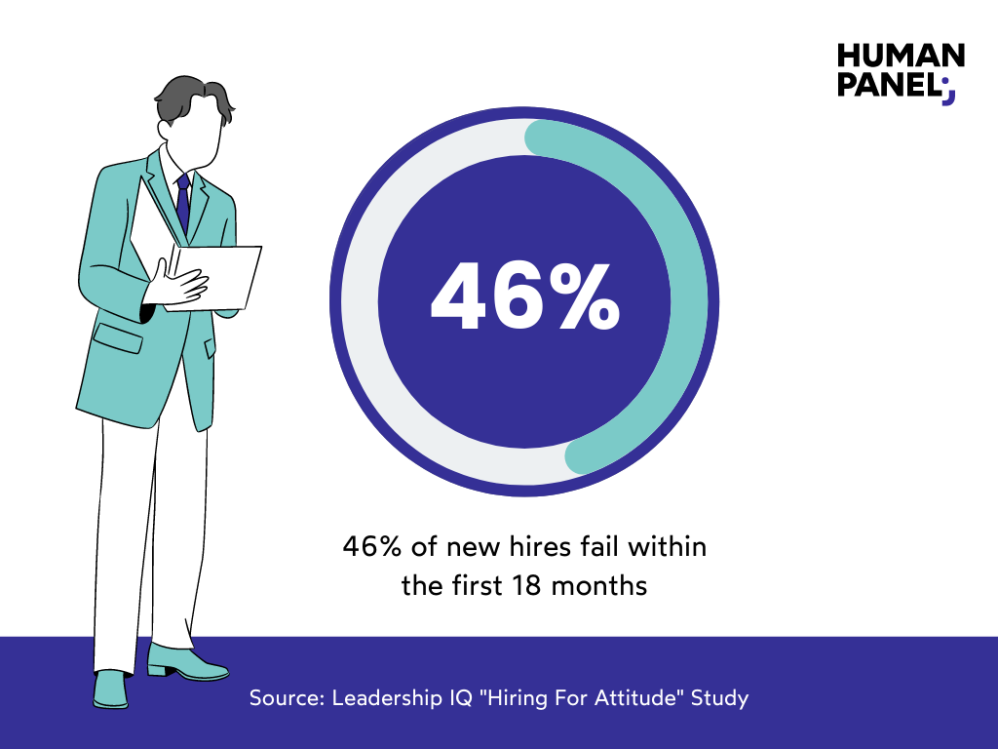What is a panic hire and how to avoid it

If you’ve ever raced against time in the hiring process, you probably know what a panic hire is. In a desperate rush to fill a vacant position, recruiters hire the first person who seems suitable. Such hires have a success rate of less than 50%, resulting in a waste of time and money. But there is a simple way to avoid them.
A panic hire scenario
The scenario is often similar: a valuable employee suddenly leaves, and you need to fill the vacancy. With pressure from your superiors, you run a hasty recruitment process and hire the first acceptable candidate, only to find out that you’ve made the staffing problem worse.
Forty-six percent of new hires fail within the first 18 months (1). The U.S. Department of Labor estimates that a wrong hire can cost up to 30% of that employee’s income in the first year, which is a high cost for large companies (2).
“Success stories of ad hoc hiring are rare. What’s more, it’s nearly impossible to build a sustainable talent acquisition or retention strategy if you keep rushing to fill open positions,” comments Daniel Aduszkiewicz, the CEO & Co-Founder of Human Panel.

What you need is a succession plan
To avoid frantic moves, you need to plan and prepare in advance. It would be best to have a succession plan in place before you start looking for candidates. Not only will it help you make better hires, but it will also retain your best employees.
Research shows that the leaders of the highest performing companies focus on putting the right people in the right roles (3), and building a team of self-motivated employees who believe in the company’s goals.
“With data analytics, you can create an apparent candidate profile and find a match faster. When your top performer leaves, you already have a narrow pool of internal successors and can quickly test them in one-on-one interviews. I know companies where the initial filtering of talent with the leverage of data works very well,” says Daniel Aduszkiewicz.

Avoid panic hiring and improve employee retention
Succession planning is like a relay race where you can’t drop the baton. When a position opens up in your company, fill it with someone from your internal pipeline, moving employees vertically and horizontally until you run out of players on your talent bench. This way, you will have a smooth and rational transition of responsibilities.
Yet, only 28% of talent acquisition leaders admit that internal candidates are vital for filling vacancies . Companies look outside for new hires, which are harder and more expensive to find.
“Internal hires can improve employee retention. A talented employee who has not been promoted twice despite their skills is unlikely to give the employer a third chance. Of course, ambitions aren’t discussed every day. Besides, there’s a constant influx of people in a large organization, so the list of candidates suitable for a particular position isn’t set in stone. It changes every year or every quarter, and this is where you need real-time data,” says Daniel Aduszkiewicz.
Making smarter decisions
If you want to avoid panic hiring and always have some backup players on the bench, you need a succession plan. Having one increases your chances of finding a better candidate for an open position and improve employee retention.
“If you’re good at managing people and good at reading data, you can make better, smarter decisions,” concludes Daniel Aduszkiewicz.
Do you want to see how you can improve your people management with data? Try out our solution and find out what we can do for you!
Sources:
(1) Why New Hires Fail. The Landmark “Hiring For Attitude” Study
Avoid panic hire and other serious HR mistakes by organizing your workforce and supporting your decisions with data. Thanks to Human Panel, you can easily track all HR metrics and manage processes. Reduce guesswork and immediately switch to a data-driven approach. Sign up for a free demo and see people analytics in action.




